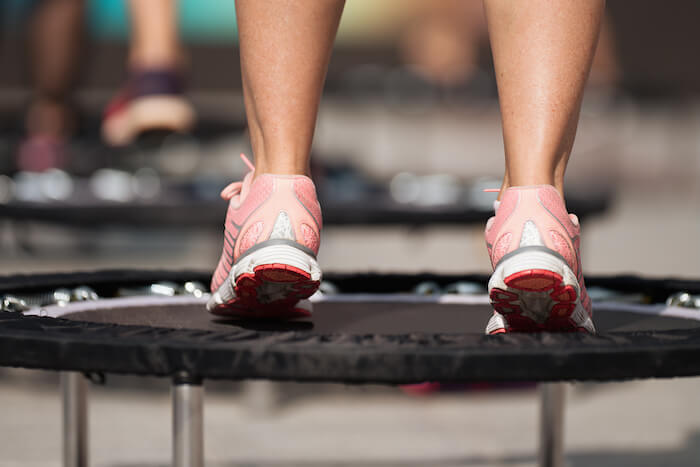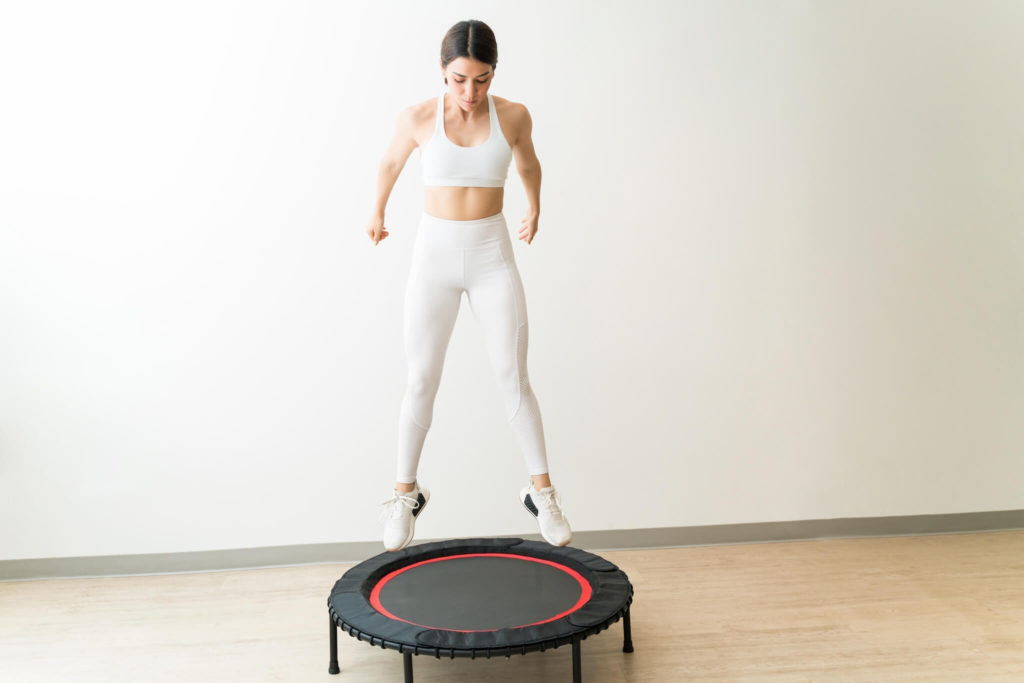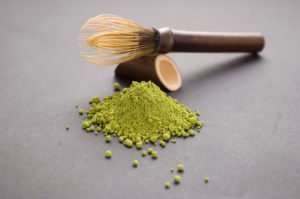If you are looking for a way to get more exercise, look no further than the humble rebounder. It has been used as an effective workout tool for over 30 years and is now one of the most popular fitness products on the market.
The original rebounder was invented by Judson Alton James in the 1970s. He created it as an alternative to high-impact workouts, such as running or jogging. It became popular through gyms and physical therapists’ offices before being bought out by a company called ReboundAir in 2005.
For the past few years, rebounding has become a popular fitness trend and it’s not hard to see why. Not only does it provide a total-body workout that is safer than running or other high-impact exercises, but it also boosts your health in many ways! In this blog post, we will go over some of the benefits of rebounding and show you how to get started with your own rebounder today!
HEALTH BENEFITS OF REBOUNDING
Cardiovascular system and circulation:
A study by the University of Maryland School of Medicine found that people who do rebounding for just 20 minutes, three times a week, can reduce their risk of arteriosclerosis and heart disease. In fact, research shows that this type of exercise is more effective at improving cardiovascular health than running or biking!
Bone density and osteoporosis:
Rebounding can increase bone mineral density in just a few days! In fact, bouncing on a mini-trampoline for 15 minutes three times per week, you’ll be better off than if you spent an hour walking at a steady pace every day! Plus, it’s great for those with joint pain who are looking to stay active without overdoing it.

Lymphatic system:
The lymphatic system is a network of channels that carry fluid and immune cells throughout the body to help fight infection, digest food particles, remove wastes from our tissues, protect us from bacteria and viruses, produce antibodies against foreign substances in our bloodstream and regulate other key bodily functions such as sleep.
Rebounding moves the lymphatic fluid by creating an up-and-down motion in our lymphatic vessels.
It massages the lymphatic vessels and gently moves them to help clear excess fluid from tissues.
Digestion:
Rebounding may also help to improve digestion by stimulating the secretion of digestive juices from our stomach and small intestine. In addition, rebounding can stimulate bowel movement – a process that is needlessly slowed in many people who sit all day long at work or school.

Improved Balance:
Rebounding helps to improve your balance by strengthening the muscles in your feet, ankles, and lower legs as well as by stimulating the vestibule in the middle ear.
If however, you have problems with maintaining your balance when rebounding you can use a stability bar adjusted to your height and personal needs.
Healthy Blood Sugar Levels:
Rebounding three times per week for 20-30 minutes at a time may help people with blood sugar problems. A recent study found that rebounding positively impacts blood sugar markers. (Maharaj, S.S., and Nuhu, J.M. (2016), Rebound Exercise for type 2 diabetes. Aust J Rural Health, 24: 123-129. doi:10.1111/ajr.12223)
Stress Reduction:
Rebounding is also a great way to reduce stress levels. A study at the University of North Carolina found that people who rebounded for just 30 minutes three times per week reported lower levels of anxiety and depression than those who did not.

HOW TO REBOUND SAFELY
You might be worried about getting injured when trying out rebounder workouts, but there are some tips and tricks that you can use to stay safe:
- Never bounce on a hard surface such as concrete or wood, which can cause injury. Rebounders are best used indoors on carpeting.
- Wear shoes with a good grip
- Make sure that you’re not bouncing too high for your skill level – so if you’re just starting out with rebounding, consider simply doing some gentle bounces without trying any intense forms of exercise
- Consider purchasing a rebounder with an adjustable handlebar for extra stability and balance
- Talk to your health care provider before you start using the rebounder to make sure that this form of exercise is appropriate for you
- Your body may just need some time to adjust to this new type of movement, so you should start with a short, less intense workout and you should still stop working out if you feel faint or dizzy.
The features for look for in a good rebounder are:
- base stability (to prevent it from tipping over) it should have sturdy and stable legs as well as a durable overall construction that will last you several years of regular use
- high bounce surface for a more intense workout; the circumference falls somewhere between 36 and 48 inches
- a patented suspension system to absorb the impact of your jumps and distribute weight evenly on both feet
- springs are a very important element in rebounders because they provide an extra level of support for your joints. They are a big factor in comfort and performance, so make sure you know what type of springs your rebounder has as they will take abuse from your jumps. Springs give more bounce-back than rubber, which means less strain on your neck and spine as well as increased longevity (less compression). For ultimate durability, there is nothing better than steel springs.
Here are some highly-rated options at various price points:
SCIENTISTS SAY YES!…
…AND NASA CONFIRMS IT!
Rebounding is a fun and effective way to stay healthy. If you’re looking for something quick that feels like play, try rebounding! The best part of it – There’s no other equipment needed but the high-quality rebounders we’ve mentioned above which are only a small investment in your health. If you have never tried rebounding… it’s time to do it now!
YOU MAY ALSO LIKE:
DOES IT MATTER WHAT MASSAGE OIL YOU USE?
A massage without oil is, well… not a massage. It’s more of a skin-abusing torture rub. Massage oil allows the fingers…
5 TIPS FOR MAKING THE MOST OF YOUR MORNING ROUTINE
By Tess DiNapoli Whether you’re a coffee-right-out-of-bed type of person or a hit-the-snooze-one-too-many-times napper, your morning routine sets the tone for…
HEART AND BRAIN SCIENCE TO MAKE NEW YEAR’S RESOLUTIONS FUN AND SUCCESSFUL
“The secret of change is to focus all of your energy, not on fighting the old, but on building the new.” …
6 MORNING EXERCISES TO KICK START YOUR DAY
By Kevin Jones Physical activity is among one of the most important aspects of our lives and yet so widely taken for…
IS MORINGA REALLY A “MIRACLE TREE”?
Moringa Oleifera is one of the most commonly cultivated species of the Moringaceae family. It’s also known as the drumstick tree…
FIVE TIBETAN RITES DEMONSTRATION
The Five Tibetan Rites are also known as The Five Tibetans, The Five Rites or The Five Rites of Rejuvenation. The…







